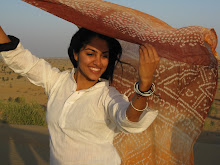

The Play
“Meri Kahani: My Story” is a play written by my wonderful cousin Mehreen, and her friend Umbreen. As their master’s thesis, they interviewed many South Asian immigrants in Toronto who were victims of domestic violence and complied all their stories into a play. Meri Kahani has gotten an intense amount of recognition in Toronto and has now been put on at least 22 times.
I respect what Mehreen and Umbreen did as it brings out a social issue through a different and unique outlet. I highly believe in using art to increase awareness and was in awe of their efforts. In my time in Hyderabad I was introduced to a woman named Mala, a friend of my cousin Winsome, who easily started to treat me like family. I found out she used to act in Hyderabad, than one thing led to another and we are started to initiate the play in Hyderabad. I really wanted to be able to bring out these social issues in a unique way and thought the themes and stories that were focused on in Meri Kahani were exact issues that occur everyday in India, however are never spoken about.
Seven months later after lots of planning on the side, outside of work, Meri Kahani was finally brought to India. We put on two shows, one on May 9th and one on May 10th. The first showing had many attendees from very prestigious backgrounds and are people that make very big decisions in Hyderabad. This excited me because these are people that get things done here and their awareness could even change laws. The rest of the attendees for the first and the second show included many people of different backgrounds. We were very unsure of how the audience would react, as the content of the play deals with issues that are readily present in the lives of these people; however are never spoken of. Though our fears were valid, the community reacted in the exact opposite way. The cast and crew were applauded on their performances (I had the privilege of acting as one of the lead monologues in the show, it was 25 minutes long!! How I memorized all that, I have no idea!) and many people thanked us for bringing such discussions alive. After the play, though the audience was shocked by the content and interesting conversations were arising left and right. Many people still had tears in their eyes from being able to relate to a character, others were shocked that they had not realized this was a reality. Meri Kahahi was covered in all the news papers and yours truly’s photograph was displayed many times in the paper. We also have a local magazine covering the event.
In the next few months the play plans to travel all over India and to other communities in Hyderabad. Though I will not be able to be a part of it, I am proud to have been one of the people who started this play in India. I am so thankful to Mehreen for giving us the rights to use the play. I cannot describe to her or anyone else how much of an impact this play had on the community and I am so glad I had the opportunity to make a difference in such a unique way during my stay in India, and also use my passion of theater and acting.
Finally I wanted to state how lucky I am to have so many people support me. Everyone of my friends attended the play and as I did my monologue, I could see all their faces in the audiences, listening attentively and being supportive. Sumit, Kendra and Vaani even came from Bangalore and Pune to come watch the show and their support and excitement really kept me going. Our cast and crew also happen to be an amazing group of people. We really lucked out in the people we just happened to run into and now these people have become close friends of mine.










